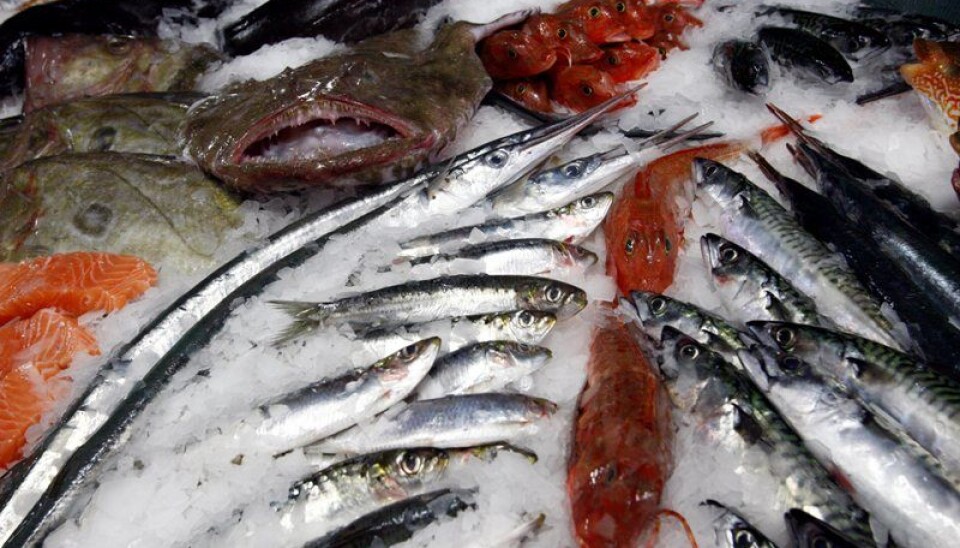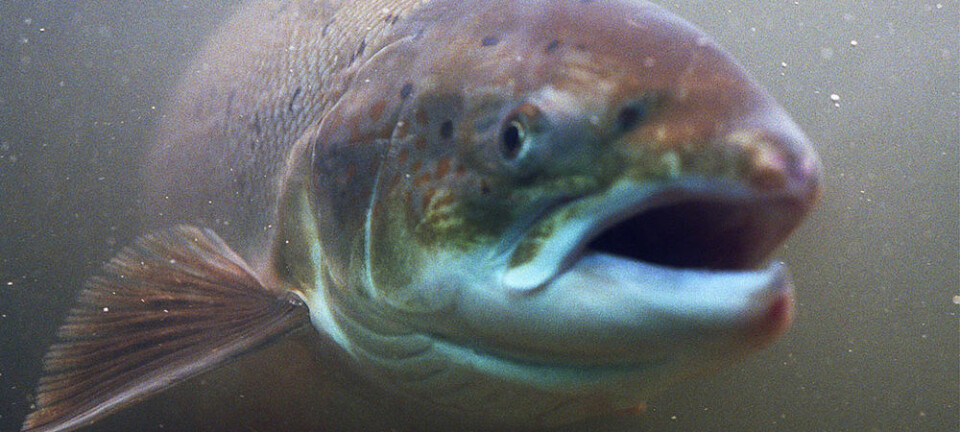
Want some week-old fish?
Most of us would refrain from buying fresh fish that was caught more than three days ago. But if we don’t know the day of catch, we gladly consume fish that is much older.
Denne artikkelen er over ti år gammel og kan inneholde utdatert informasjon.
400 customers in supermarkets were asked how old fresh fish had to be before they would refuse to buy it.
For instance, if the piece were cut from a fish that had been hauled aboard a boat on a Saturday, would they buy it on Monday? How about Wednesday? Or the following weekend?
A mere 15 percent said they would buy fish that was more than four days old.
Then the researchers had 300 customers from one inland city and two coastal cities sample six cooked pieces of cod that had been caught on various days. They were not told how old the fish was.

The majority thought fish that was up to 13 days old was tasty enough to buy. Even fish that had left the sea 15 days ago was considered buyable by 30 percent of the customers, but any longer than that was found over the hill for most.
“In Norway we seem to have rather romantic conceptions about how fresh the fish is that we buy in stores. The truth is we accept fish that is ‘old’ as long as we don’t know about it,” says Nofima researcher Jens Østli.
Old fish is rarely a health risk
Some 15-20 percent of the customers feared they could get ill from eating unfrozen fish that was two weeks old. You might share their apprehension, but Østli is puzzled by this attitude.
“This is simply a myth that has survived,” he says.
According to him, if fish is sufficiently heated there is little that can make you sick.

“What’s true is that fish starts to smell bad long before it is actually rotten, so that makes it rather easy to decide for yourself whether you should eat it or not, whatever the date of catch which is disclosed on the label,” he says.
In any case it is hard to estimate a general shelf life for fresh, refrigerated fish. It varies a lot.
“If you cook it thoroughly enough any flora of microbes you have there will be knocked out.”
“I would go so far as to say that even rotten fish can be eaten without the consumer getting sick, as long as the fish is given sufficienty heat treatment,” says Østli.
Right off the boat
Fish merchant Elena Borovleva in northern Tromsdalen agrees with him on one thing − customers prefer newly caught fish.
“It’s a question of what we are used to. Customers are demanding, especially up here in the North, and prefer to get their fish right off the boat,” she says.
In her store they get their fish in the evening, several days a week, so they generally have completely fresh fish for sale.
Yet she says some species of fish can do with a little ageing, because it improves the taste.
Salmon filets have a pretty long perishability and they don’t need to be from newly caught fish to retain high quality, according to Borovleva. But she and her colleagues sometimes find it hard convincing their customers this is the case.
“They are out to get freshly caught fish. But if they see that the quality is good and we can explain how we do things and that the fish is top quality – they buy it anyway.”
Pros and cons of labelling
Perishability and the date of catch is now required by law at fish markets. This gives consumers the option to decide for themselves whether they deem the fish sufficiently fresh.
This regulation was only initiated in Norway a couple of years ago. The Nofima researchers feared that the industry would suffer, because so many consumers associate fresh fish with a catch which is only about two days old at a maximum.
The study by Østli and his colleagues indicates that customers don’t want non-frozen fish that is close to its perishability limit, even though it is still okay. The study is being published in the journal Food Quality and Preference.
In one test conducted by Nofima researchers in which they presented customers with raw filets, the consumers’ eagerness to buy the fish plunged when the date of catch was provided.
“On average the consumer accepts fish that has been caught up to eleven days ago, but this dropped to seven days when the date of catch was provided,” says Østli.
In this respect it mattered little whether the customers were from the inland city or from the coastal ones.
Better with a perishability date?
Østli thinks it is worth considering whether a final date of consumption would be much better than the date of the catch.
“My personal opinion is that consumers lack what it takes to evaluate fish quality objectively. It’s hard enough for the experts.”
There are also a number of factors involved with quality that consumers don’t reckon with, such as season, methods of catch, preservation temperature and handling.
But marking fish with the date of catch does have its advantages. It might have raised the general quality of seafood in the fresh fish counters of supermarkets because they demand fresher catches from the wholesalers.
Frozen fish is underrated
The Nofima researchers says frozen fish is underrated as an alternative to fresh fish, especially for the modern consumer who only shops for groceries a couple times a week.
“Frozen fish has a lousier reputation than it deserves when compared to fresh fish,” asserts Østli.
A study with Norwegian cod showed that British consumers were hard put to taste the difference between fresh and thawed fish, even when they were told which was which.
The consumers were more prone to buy frozen fish if it was marked, for example, with “Frozen at sea”.
“Frozen fish is considered second-rate in Norway but the fact is that it can be better than fresh fish,” says Østli.
“It is frozen expeditiously and the freezing process is much better than you could get by putting fresh fish in your own freezer.”
































